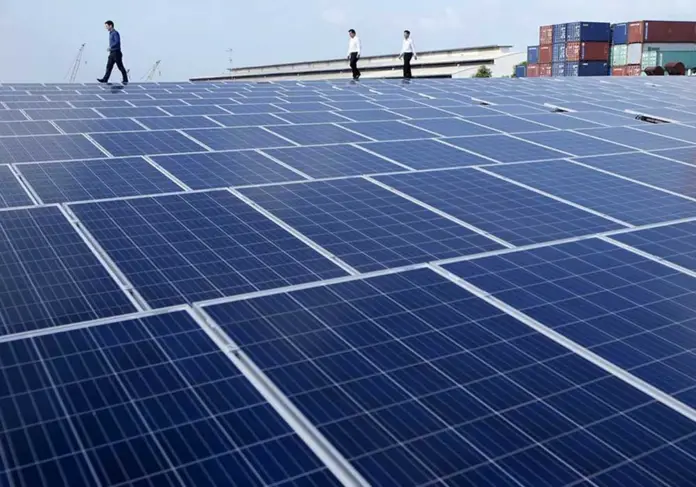Pakistan has long been grappling with energy-related issues. In an article for the Tribune, Syed Akhtar Ali highlights the historical problem of load-shedding due to limitations in generating capacity, which has now been compounded by the issue of excess capacity causing circular debt. Furthermore, the country faces challenges related to smaller gearbox capacity, associated discontinuities, and escalating fuel prices.
As a result of substantial capacity payment obligations, alternative projects have been delayed. However, the high cost of fuel and a scarcity of foreign currency have compelled us to make significant investments in solar energy.
In this section, we will delve into the dynamics of both domestic and global solar markets, considering supply and other relevant factors.
The cost of solar photovoltaics (PV) has been steadily decreasing. While some prices are too low to serve as benchmark pricing, others present a more realistic reflection of typical situations. From 2017 to 2019, solar PV utility prices in the MENA region, primarily comprising the UAE and Saudi Arabia, ranged from 1.5 to 3.0 US cents per kilowatt-hour (kWh). This can be attributed to the high insolation levels exceeding 2,200 kWh/m2/yr and the availability of low-cost capital ranging from 3% to 6%.
In September 2022, Canadian Solar secured a bid for a 253 megawatt solar PV project with 1 gigawatt-hour (GWh) of storage in Chile, priced at 3.738 US cents per kWh. Similarly, in August 2021, Canadian Solar outperformed competing bids ranging from 2.1 to 2.8 US cents per kWh for a different project, offering a rate of 1.332 US cents per kWh.
The most recent publicly available bidding results relevant to Pakistan’s circumstances come from India. For instance, Voltalia, a French company, received approval for its proposal of 2.888 US cents per kWh for a 100MW project in Uzbekistan. Another company, Masdar from Saudi Arabia, won a bid for a 250MW solar PV facility at a rate of 3.044 US cents per kWh. Power China secured a 150MW solar project at a rate of 4.828 US cents per kWh.
It is important to note that prices for different projects vary significantly, possibly due to factors such as location and specifications. An interesting observation is that a French company outbid its Chinese competitors, contradicting the prevailing belief about the competitiveness of different nations.
India currently boasts one of the most important and competitive solar markets. Public data reveals the success of 12 tenders in 2022 and 2023, with capacities ranging from 250MW to 1,200MW. These tenders cover three project types: solar PV solo, solar PV and wind hybrid, and solar PV and wind hybrid plus storage.
Presently, four types of solar PV utility projects are popular. These include solar PV alone, solar PV with battery storage ranging from one to four hours, solar PV and wind hybrid without storage, and solar PV and wind hybrid with battery storage ranging from one to four hours.
Solar power alone has been the most common option for supplying daytime load at a lower cost. However, solar PV-wind hybrid with storage is evolving to provide a 24-hour source of electricity.
Although the prices of batteries have been decreasing rapidly, they remain relatively expensive. As battery costs continue to decline, type 4 batteries are expected to become more prevalent, offering a comprehensive individual power supply solution.
Solar rooftop installations have gained popularity not only in Pakistan but also in other countries. Commercial and public buildings that consume electricity during the day have found that solar PV systems provide cost-effective electricity, both with and without net metering arrangements.
The scale of solar PV projects has witnessed an increase in recent years. A decade ago, projects ranged from 30 to 50 MW. However, India has been pursuing larger hybrid projects with capacities of 1,000-1,200 MW, although 500-600 MW plants are more typical. The next commonly used size is 250-300 MW. In Pakistan, 50 MW solar installations have become commonplace.
Reports indicate that India had the lowest solar capital expenditure (capex) in 2019 at $619 per kW. This can be attributed to lower labor costs in installation and reduced transportation costs resulting from local manufacturing. Information on unit capital costs in China is scarce, but it has been stated as $795/kW, although this figure appears to be higher than the actual cost. Russia and Japan had the highest unit capex in the same year, with costs of $2,000/kW or more. In Europe, prices ranged from $900 to $1,000/kW.
Previously, Nepra (National Electric Power Regulatory Authority) authorized projects in Pakistan at a cost of 4 US cents per kWh. The benchmark pricing for the 600 MW Muzaffargarh project was set by Nepra at 3.4108 US cents/kWh. However, European sources have expressed skepticism about the level of competition and criticized the benchmark tariff as being too low, citing increased risk, interest rates, rent-seeking, and monopolistic trends as contributing factors to the rising energy costs in Pakistan, which have increased by an average of 40-50%.
International interest rates have risen, as indicated by the current Libor rate of 5.5%. Nepra’s 4 cent tariff was based on lower interest rates of 0.5% Libor and a margin of 4.5 percent. The IMF has called for further interest rate hikes, and local interest costs are currently even higher at treasury rates of 20-21%.
The benchmark rate set by Nepra for the Muzaffargarh plant at 3.4108 cents/kWh seems to be based on older, lower interest rates. However, it is uncertain when or if interest rates will decline, depending on the pace of global economic recovery. Nepra may consider consulting foreign specialists to gain insights into the long-term trajectory of interest rates, although predictions in this regard carry risks.
It is argued that bidders can project and calculate more effectively, suggesting that the market and bidders have a better grasp of price anticipation than regulators. Interestingly, the Muzaffargarh project has not received strong support from local investors, as it has caused delays in the construction of their authorized projects, which are typically smaller with a capacity of 50 MW. Many argue that this smaller project size is more suitable for Pakistan’s market.
Other factors, such as the load and transmission infrastructure, have influenced the decision to make the Muzaffargarh site a 600 MW project. The outcomes of the bids will reveal whether better costs and competition could have been achieved with a smaller capacity of 50-100 MW or with the larger 600 MW capacity.
Determining the ideal scale for solar plants remains a contentious issue, as it depends on factors such as load locations, capacity requirements, and transmission infrastructure, as mentioned previously.
From the perspective of local investors and industry, a smaller capacity in the range of 50-100 MW would be preferable. Building a strong local industry is crucial for providing employment, fostering commerce, and promoting business growth. Seizing the local market presents the most effective strategy for achieving these goals.
The future of solar power is promising. Beyond 2050, the use of fossil fuels is expected to significantly decrease, if not be completely eliminated. Solar and wind power will play a vital role, even in the production of hydrogen. Therefore, developing a robust local industry becomes even more important.
However, it is worth noting that energy consumption may decline, and previous growth estimates may no longer be valid due to the recent economic crisis and significant currency devaluation.
Perceived risks in Pakistan are substantial, both at the actual and market levels. Our concerns regarding European circles have already been expressed. There is a fear that higher bid prices may be accepted, in which case it might be more beneficial for Pakistan to delay the project.
As for the outcome of the bidding process, nothing can be predetermined. Suppliers have their own motivations and plans, and the market is known for its surprises. Chinese enterprises, with a favorable administration and the presence of CPEC (China-Pakistan Economic Corridor), have a better understanding of Pakistan’s market and the associated risks.
It is anticipated that increased global manufacturing capacity for solar energy will lead to greater price competitiveness. The cost of Chinese PV modules, for example, is projected to decrease by 15% in 2023. We can hope for the best in terms of cost reductions.







